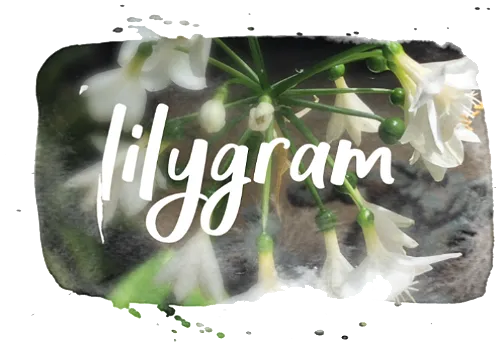
Friends of Brisbane Botanic Gardens & Sherwood Arboretum (FBBGSA)
‘Connect – Promote – Protect’
July 2025
Contact Us: events@fbbgsa.org.au
FBBGSA PO Box 39 Sherwood QLD 4075 ACN: 607 589 873 ABN: 20 607 589 873
GENERAL MEETING WEDNESDAY
6 AUGUST 5.30pm
by Julie, Director FBBGSA

This is an early notification of this General Meeting. The range of topics to be covered include wording changes to our Constitution. The are several reasons for this. One is to comply with the Australian Tax Office rules to specifically indicate where we will allocate FBBGSA tax deductible donations if we were to cease to exist. Currently our Constitution covers any money FBBGSA has if it ceases to exist but this is not specific enough to be able to acquire the DGR status for tax deductible donations as communicated to Julie by the Tax Office.
The second area is to tidy up some of the wording which differs from a Constitution prepared by the Australian Charities & Not for Profit Commission (ACNC) which FBBGSA is registered with.
To make this trip worthwhile for the Committee and very welcome members we will be running a video! To top it off we will be supplying tea and coffee (and soup if anyone wishes to make some for us) and a pre-dinner snack.
For these resolutions to be passed we do need a quorum of people. Please allocate this evening as one of the meetings you will attend (and the AGM in September too). The importance of these Constitutional change relates to FBBGSA’s ability to acquire grants for projects we have planned, for example, setting up the Greenhouse with irrigation and equipment and the 50th Anniversary for Brisbane Botanic Gardens, Mt Coot-tha in May 2026.
I will be sending a formal invite to members in the new future with the specifics of the changes and look forward to celebrating with you, the first 6 months of the new Board. See you there!
Update on Mt Coot-tha’s “Eco” Plans
All members will have received an email regarding the Brisbane City Council’s plans for Mt Coot-tha. Some of these don’t directly impact on the Botanic Gardens like the Tree Top Walk, glamping on the range from Mt Coot-tha to the Sunshine Coast.
However the changes to the Dome and the comments of being able to have a night Light Show when the Dome is renovated/ revitalised is still on the agenda. I understand the Dome does need significant maintenance and without any details on the proposal at this time it is difficult to comment beyond this.
Last week the Greens local members and interested parties conducted a meeting to discuss the proposals. My understanding is that no definitive action plan came out of the comments by the attendees. Next week I will be attending a meeting by the Mt Coot-tha Protection Alliance (MCPA) who you may recall was successful fighting the Zipline and stopping the previous provider’s Light Show application.
Any further developments will be communicated to you. This is a time when Friends of Brisbane Botanic Gardens & Sherwood Arboretum needs to be strong and united. If you have any family or friends who wish to support the Gardens the best way is to become a member and to express any opinion on the issues. I received two responses to my initial request for comments on the proposals. Do you want a say? Please email me on director@fbbgsa.org.au .
Thanks to you all for your commitment to the Brisbane Botanic Gardens at Mt Coot-tha – a special and favoured place by locals and overseas visitors alike; with living collections of plants (and associated animals, insects etc) from around the world; and amazing Garden staff who make it all happen daily!
Volunteer Role: Welcomer
(Mt Coot-tha Welcome Team)

The closing date for applications is:- Monday 14th July
All expressions of interest please to Volunteer Programs Coordinator, Merilyn Williams – email address – Volunteers.brisbanebotanicgardens@brisbane.qld.gov.au
Requirements: Excellent people skills, including welcoming and orientating visitors to the Botanic Gardens and Mt Coot-tha Precinct
Roster: one day per fortnight 11.00 am – 2.30 pm based at the Mt Coot-tha Visitor Information Centre
Process: Interview, successful applicants half day induction, mentor training provided at the Mt Coot-tha Visitor Information Centre and Familiarisation of the Mt Coot-tha Precinct
MYALL PARK BOTANIC GARDENS, GLENMORGAN
TALK BY MARIE HOLLINGWORTH, VOLUNTEER
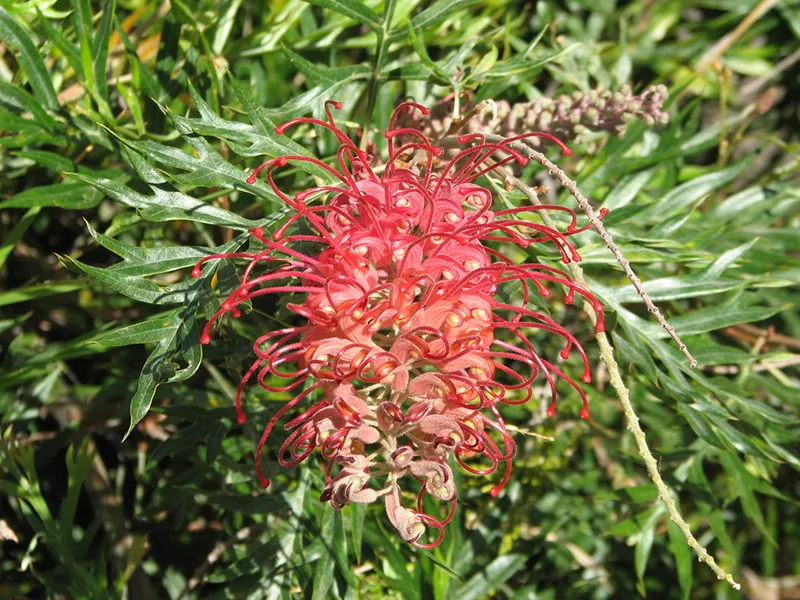
Do you know about Grevillea Robyn Gordon?
Do you know where that Grevillea was produced?
Are you looking for ideas for a Qld holiday?
Marie Hollingworth has supported these Botanic Gardens for years and can tell the story of the
* diversity of beautiful flora and fauna adapted to very harsh conditions
* inland plants – grown from seed collected around Australia
* origins of the 4 Gordon Grevilleas –naturally hybridized here
* Art Gallery with paintings of the area’s flora by Dorothy Gordon, plus works by previous Artists in Residence and Art Installations and
* Accommodation options including historic farm cottages and spacious bushland camping grounds.
WHEN: Tuesday 29 July
9.30 am till 11.30am
WHERE: Brisbane Botanic Gardens Auditorium
Mt Coot-tha
COST: FBBGSA Members are free
$10 for non members
REGISTER: www.fbbgsa.org.au/events
FBBGSA FERN WALK AND TALK WITH HELEN JEREMY
Sunday, 29 June 2025
by Ros Laundon

Thirteen of us gathered at the Botanic Gardens Fern House for Helen’s Introductory Fern talk. She took us through basic fern biology, part names, reproduction and occurrence, particularly the local occurrence of native ferns. Helen touched on fern reproduction for garden purposes, something covered further in the walk through the Fern house.
Growing ferns at home was covered referencing in-ground and potted plants, matching plants according to the original plant habitat and growth habit. So, a fern that grows on a dry-ish hill will not thrive with wet feet, etc. Variation of your high quality potting mix is also a matter of matching the habitat. Choose how much coconut peat, sand, charcoal, perlite, and vermiculite to add to your mix and fertilise lightly.
On the walk through the fern house Helen pointed out fern types, features and individuals that she had mentioned in the talk. Needless to say, ferns range from tiny, Pyrrosia rupestris, to huge, Angiopteris evecta, with features such as fertile and non-fertile parts, and leaf shapes that are absent, Psilotum nudum, simple, Microsorum punctatum, or divided, Rumohra adiantiformis.
We learned to identify ferns from the location of spores, the shapes of spore occurrence patterns and the feel of the keel on the underside of Crow’s Nest Ferns. Tree ferns have distinguishing hairy parts, hairs on Cyathea cooperi, or scales (more like minute ribbons) on Dicksonia antarctica.
Helen pointed out by example that some ferns are invasive by nature so take care where you plant them in the garden. She also gave examples of her more relaxed care regime showing that some ferns are tough plants that cope with variation in watering, a great encouragement to new fern growers.
It was a delightful morning of information and immersion in the fern world. Thank you, Helen, for the inspiration to go forth and multiply your fern collection.
A Guided Camellia walk with Steph and Darryl Baptie at Brisbane Botanical Gardens
The genus Camellia species is native to extensive areas of tropical and subtropical Eastern and Southern Asia, extending from the Himalayas, to Japan, Indonesia, and East and Southern China. It belongs to the family Theaceae. In these areas it grows in the subtropical understory with cool temperatures and steady rainfall. It is also found growing in association with Rhododendrons and Azaleas. About 220 species of Camellia have been described, and over 26000 cultivars have been developed by hybridization and propagation.
All tea, whether green, white, matcha, Assam, Ceylon, Darjeeling, Oolong or Kenyan it is derived from the same plant Camellia Sinesis.It was initially grown and brewed in China. It was also discovered in North India by elephants which consumed the Camelia sinensis plant resulting in extra energy and vitality. Humans soon followed with tea brewing.
Camelias are generally considered to be shrubs with thick serrated glossy leaves and beautiful multiple flowers. To grow them successfully it is important to carefully consider their placement and position in your garden. Even at Brisbane Botanical Garden their initial placement was not suitable and needed to be changed to a shaded or part shaded area with cooler temperature and an acidic soil ( ph. of 6.00-6.5,) with good water drained .Some Camellias struggle with QLD`s climate, especially the heat and humidity.

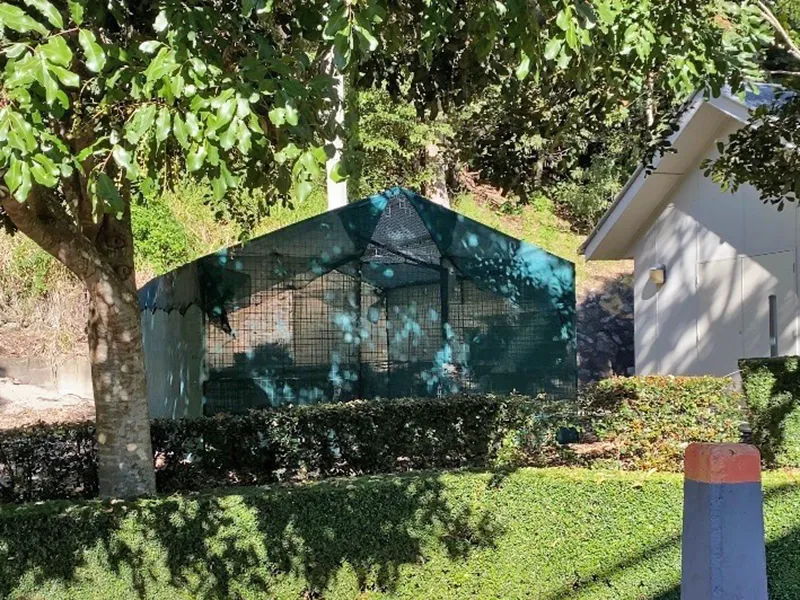
Tucked away in a quiet corner of Rocks Riverside Park just off Seventeen Mile Rocks Road The Friends Greenhouse has been generously made available to us by Brisbane City Council. We are in the process of setting it up to grow plants for sale to support the projects of Fbbgsa. Seed raising mix and potting mix and a potting up table are all ready for volunteers. If working at the greenhouse one morning a week interests you please let us know. Sign up at secretary@ fbbgsa.org.au
Kitchen Garden Update
The renovation of the Kitchen Garden at Brisbane Botanic Gardens, Mt Coot-tha has been completed. Volunteers from FBBGSA braved the cold and wild winds to plant up some of the new beds.
The raised beds now have vegetables, herbs and flowers protected by netting to keep out the ducks! The larger garden bed was planted a week ago by the Botanic Gardens staff and the seedlings are up and running!
Come and check out the progress. And if you want to join the volunteers (but without the wind) check out our website www.fbbgsa.org.au/volunteer.
COMMON JEZABELS Delias nigrina
(P 162 The Butterflies of Australia by A Orr & R Kitching)
The Jezabels come under the Pieridae family – whites and yellows.
They are found along the east coast in upland rainforest and coastal woodland. It likes the cold so North Qld they are found in the mountains whilst in South Qld they fly in the mountains in summer and on the coast in autumn and winter. Consequently if they live in winter times they live for 4-6 weeks longer than those in the warmer months. This allows the females to mate twice.
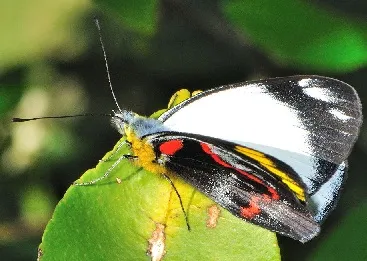
Flight is normally 3-7 m above the ground and they remain active during light rain (one of the few butterflies that do). Eggs are laid on the mistletoe leaves in clusters pf 10-90. Larvae are gregarioius with small yellow spots at the base of each hair. The yellow pupa has long spines and found singly away from the host plant.
THE AUSTRALIAN ARID LANDS BOTANIC GARDEN
By Rob
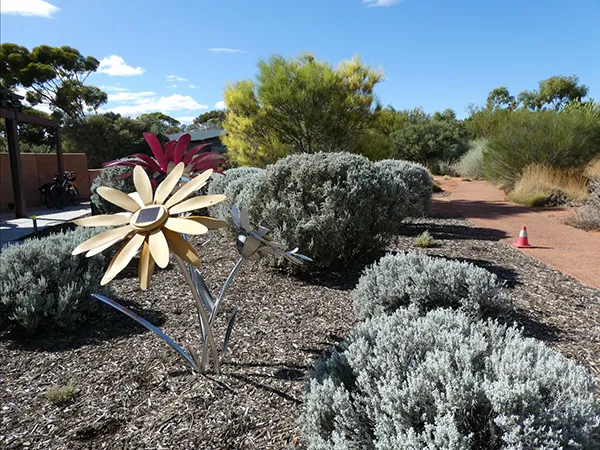
Clicking the photo will take you to a Youtube Slideshow
In March 2023, my partner and I visited the Arid Lands Botanic Garden just out of Port Augusta in South Australia.
From their website: https://www.aalbg.org/about.html
The Australian Arid Lands Botanic Garden (AALBG) was established in 1993, with the Garden officially opening in 1996, to research, conserve and promote the wider appreciation of Australia’s arid zone flora. Located on the shores of Upper Spencer Gulf with spectacular views to the ancient Flinders Ranges, the Garden showcases a diverse collection of arid zone habitats in a picturesque setting of more than 250 hectares.
We spent a lovely morning exploring these gardens: Desert, Mallee, Arid Courtyard, Eremophila Courtyard, Flinders Ranges and the Coastal Garden. (The cafe provided good coffee also!). Many plants had identification tags. Regional collections from Flinders, Gawler, Eyre, Central Ranges and Great Victorian Desert provided representative plants, many in flower. There are also sections for rare plants; and conservation zones: marine, salt bush plains and sand dunes. And there’s an educational element of course: advice, plans and hints on growing arid lands plants.
We lunched happily at the cafe and indulged in grandparent activity: buying a nature-themed swaddling rug and bibs from the gardens shop. A beaut outing, followed by cycling to Red Cliffs lookout with a view to a forest of Grey Mangroves (Avicennia marina var resinifera).
Monday Nature Walks

The Monday Nature Walks group has been enjoying autumn weather in recent months with walks in:
- Anstead Bushland Reserve (we saw the striking native ‘cucumber’ vine [Diplocyclos palmatus] with red striped fruit, cliffs of the historic basalt quarry, lots of Native Hibiscus in flower, rewarding bird spots including whip birds)
- Mt Coot-tha Forest, Chapel Hill tracks (we saw lots of beautiful Hardenbergia violacea, early Acacias in flower, and a great view of the city on a clear day from the summit)
- Freshwater National Park, near Deception Day (we saw tiny sundews [Drosera spatulata], lots of beautiful Acacias in full flower, a big variety of mature trees including Swamp Mahogany, Scribbly Gum and Pink Bloodwood).
It has been great having some new ‘nature walkers’ joining us! These recent walks have included areas new to us and some of our old favourites. We walk for the love of observing native plants in their natural habitats, and there is always something different to see each season. We don’t walk far (this is not walking for exercise, though we do get to peel off those jackets after a few hills!). But within even short distances we get to see a lot – plants on the ground, in the creeks, in the canopies of other plants, in the cervices of rocks, as well as shrubs and trees only really noticed because they are in magnificent flower or leaf.
We would love you to join us! FBBGSA members and non-members are both welcome (note please consider supporting FBBGSA and join – to keep the walks continuing. Come on any of the walks that interest you.
We walk each Monday morning, usually meeting at about 8.30 am and finishing each walk around 12 midday, with a coffee break and chat. Car-sharing is available.
Want more information? See the FBBGSA website. Or contact Anne on 0408093307 or aelliott@powerup.com.au
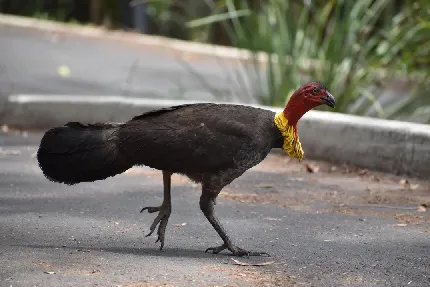
SOLUTIONS TO SCRUB TURKEYS
Recently I was away for one week and left my garden to the elements. Little did I realise the scrub turkeys would be fighting on my front porch for the rights to my house and garden (security cameras tell the story).
So while I was away they played havoc in my garden -= kicking out plants in pots; sleeping on one hanging basket; scratching around a tray of small plants and eating my bulbs!
I do have some answers given to me by a gardening friend though:
* Use stones as a mulch on top of the pots and
* the use of a fishing wire barrier to the front porch railings.
Remember if anyone has ideas please tell us all!!
SMALL NATIVE PLANTS for Australian Gardens
by Nola Parry & Jocelyn Jones
ISBN 9781877069611; 635.967 PAR

This book was published in Sydney in 2009 and reinforces at the beginning that small plants are in the foreground of every garden thus a prominent place and they deserve some thought and attention. They class small plants as “shrubs, grasses, herbaceous plants and annuals that grow up to one metre high, with a spread of less than one metre” (p 16).
There are 205 pages of plants – covering their description, how to use in the garden, what other plants to combine with it, how to care for them, and when they flower. All the plants are in colour photos to make it easy to see how they could perform. What you don’t get is their locality so some may not suit Queensland conditions.
The authors then list the plants by colour, their foliage, annuals, bird attracting, butterfly attracting, border plants, coastal plants, damp areas, dry areas, fragrant ones, frost tolerant ones, mass planting, suit pots and containers, rockery areas, shaded areas, water features, and seasonal – spring/summer/ autumn/ winter flowering. If you needed a reference book with potentially quick answers to a troublesome spot then this book is for you!
You may be surprised to know that this is a BCC Library book – so accessible and so cheap! That way you can spend more money on the plants you must have!
And if you still are not sure come to Marie Hollingworth’s talk on Tuesday 29 July covering Myall Park Botanic Gardens at Glenmorgan and see some of these natives in action – Open Day is in August if you want to see a flower spectacular!

BLACKBERRY COBBLERS/PUDDING
(from Milkwood newsletter May25)
- 3 CUPS BLACKBERRIES
- 1 CUP SUGAR
- 1 CUP PLAIN FLOUR
- 1 TEASP BAKING POWDER
- ½ CUP SALTED BUTTER, MELTED
- 1 CUP MILK
- 1 TEASP VANILLA EXTRACT
- ZEST OF 1 LEMON
Preheat oven to 170 degrees C. Grease 25cm x 25 cm baking dish. In a bowl gently toss blackberries with ¼ cup sugar. Let macerate for 10mins. In a mixing bowl combine the res of the sugar, flour, baking powder and lemon zest. Stir in melted butter, milk and vanilla extract till just combined. The batter will be a little lumpy.
Pour batter into baking dish. Add blackberries onto the top of the batter.
Bake for 45-50 mins or till golden brown and skewer comes out clean. Let cool a little then eat!
